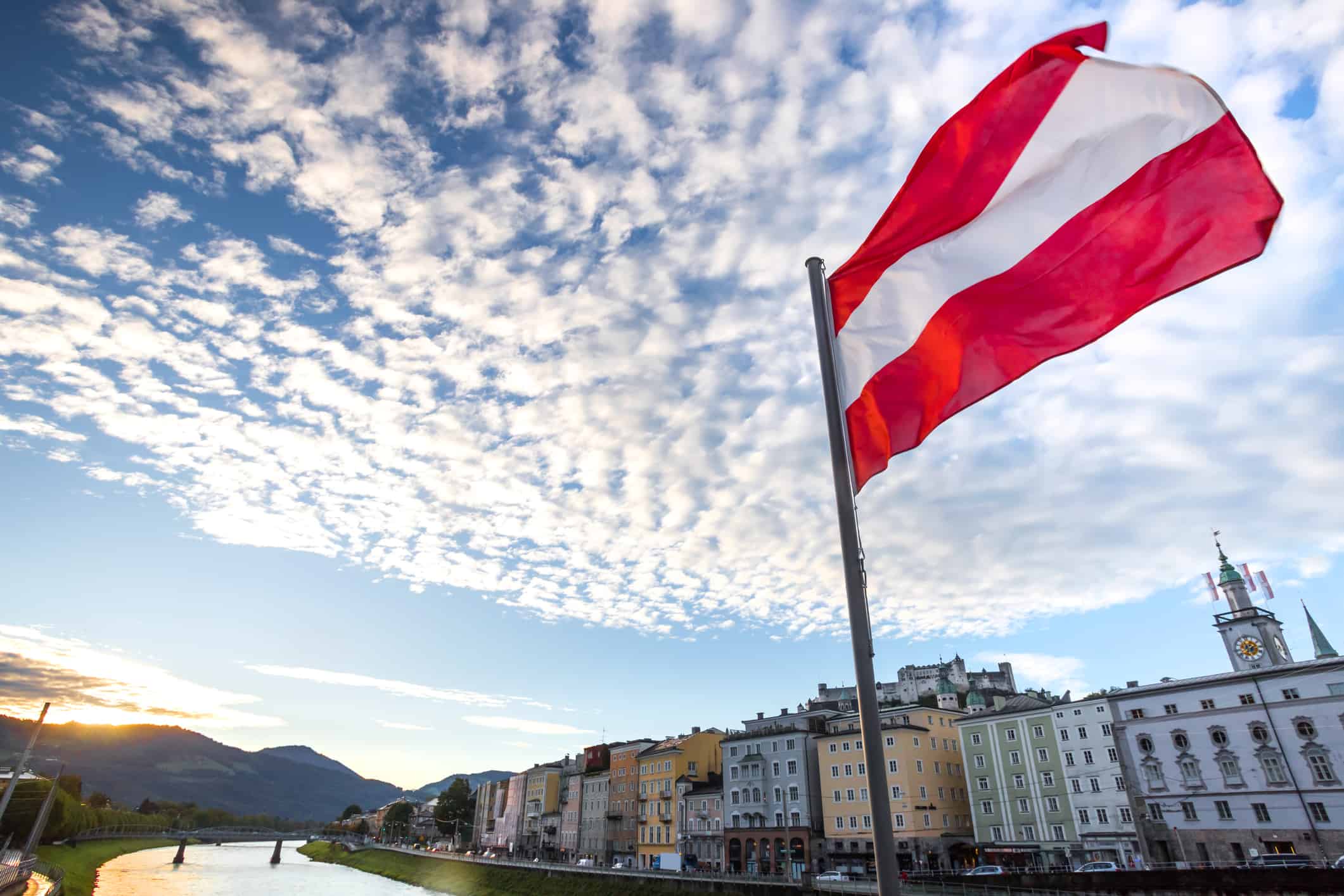Austria is a landlocked country located in Central Europe. Historically, Austria was always part of another empire or kingdom. For hundreds of years, it was part of the Holy Roman Empire. However, after the Holy Roman Empire was dissolved, the Austrian Empire was created. This only lasted for about 60 years. In 1867, the Austro-Hungarian Empire was established, which dominated European politics.
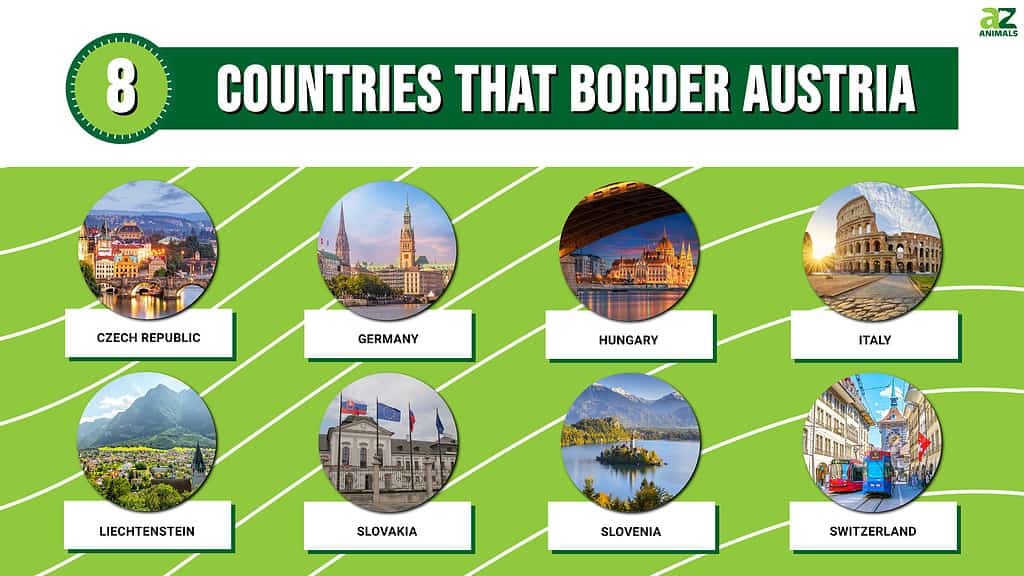
However, in 1914, the assassination of Archduke Franz Ferdinand led to World War I. After the war, Austria-Hungary was dissolved and the Republic of Austria was created. This was short-lived, however, because Adolf Hitler annexed Austria as part of Nazi Germany in 1938. After the Second World War, the Republic of Austria was established once more under the condition they would always remain neutral. Today, Austria is a democracy and has been part of the European Union since 1995.
Geographically and climatically, Austria is mountainous with the Alps covering most of the country. Austria has a temperate to cold climate. The wildlife that lives in Austria is diverse and you can see bears, foxes, falcons, and owls, among other animals.
Austria is bordered by eight nations that have an interesting history, as well. Let’s explore the eight neighboring countries around Austria.
Czech Republic
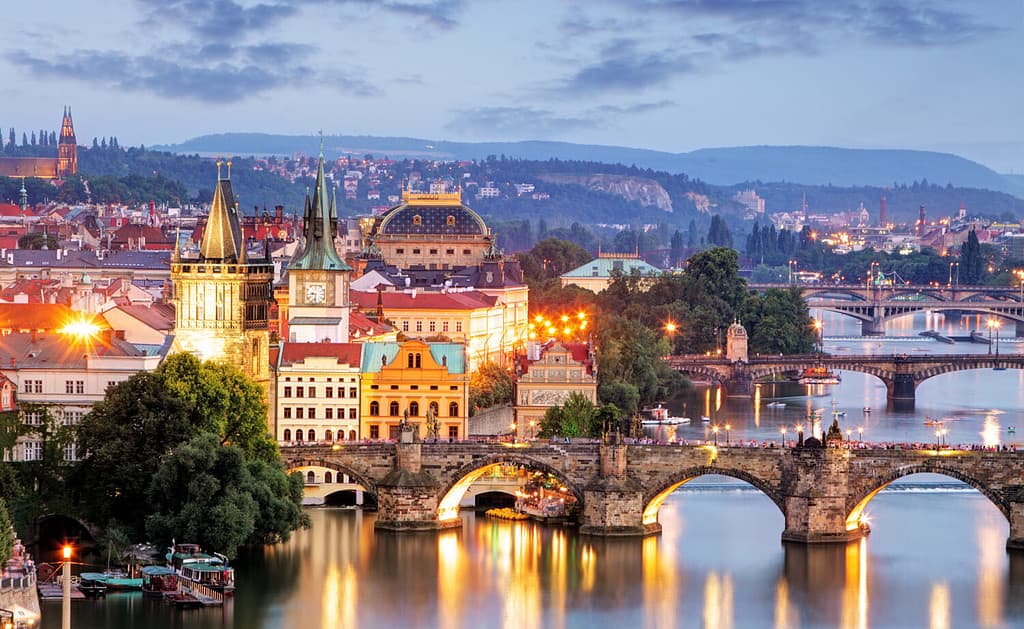
The Czech Republic consumes the most beer in Europe, with 184.1 liters per capita.
©TTstudio/Shutterstock.com
The Czech Republic is also known as Czechia, and its capital is Prague. The country has a population of 10.8 million. The Czech Republic is a hilly, landlocked country that has a temperate climate. There is a diverse wildlife living in the country, including wild boars, the Eurasian lynx, several species of deer, and others.
The last century in the Czech Republic has been interesting, to say the least. The country became part of the Austrian Empire until 1918. It was briefly a republic until Hitler annexed Czechoslovakia in 1938. After the Second World War, Czechoslovakia became part of the Soviet Union until they claimed their independence in 1989. In 1993, they formally separated from Slovakia and established the Czech Republic. Today, the Czech Republic has enjoyed a stable democracy.
Germany
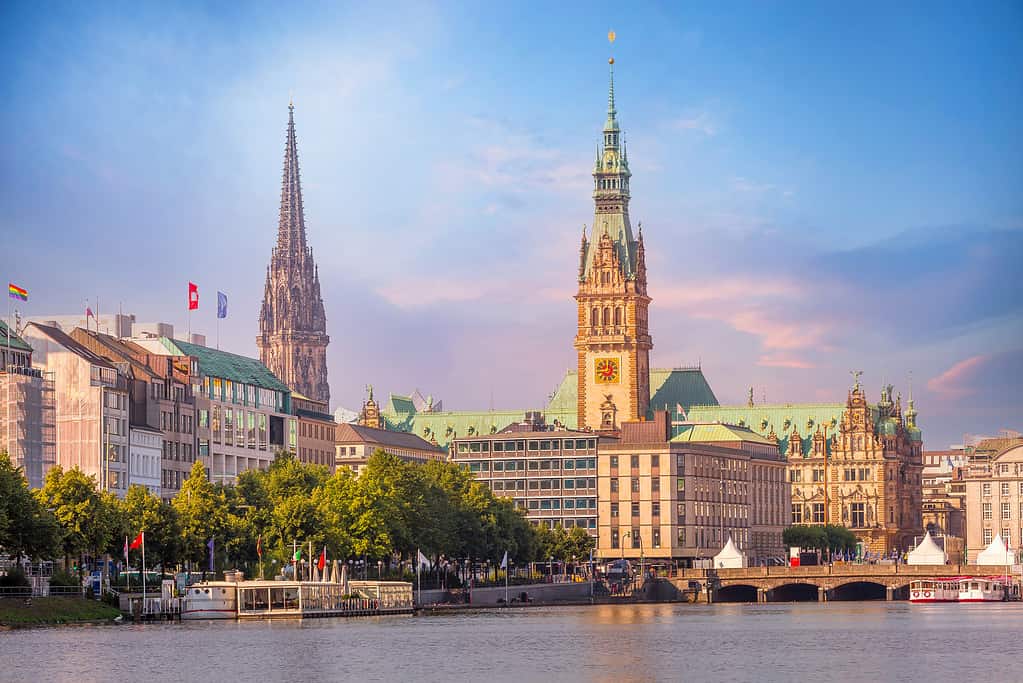
Germany has the European Union’s largest economy and is one of the largest economies in the world.
©Kisa_Markiza/iStock via Getty Images
The nation of Germany is Austria’s neighbor to the north. Its capital is Berlin and the country has a population of 84 million. Germany is a diverse country geographically, ranging from mountainous regions with forested lands, and lowlands regions. It has a temperate climate where there is a mix of deciduous and conifer trees. Wildlife is diverse with deer, wild boars, and badgers, among other animals.
Germany has been an influential country throughout history. After World War II, the country was split in two. East Germany was a Communist-allied country part of the Soviet Union bloc and West Germany became a republic. After the fall of communism, Germany reunited and became the Federal Republic of Germany. Today, it remains an influential country within Europe and globally, as well.
Hungary
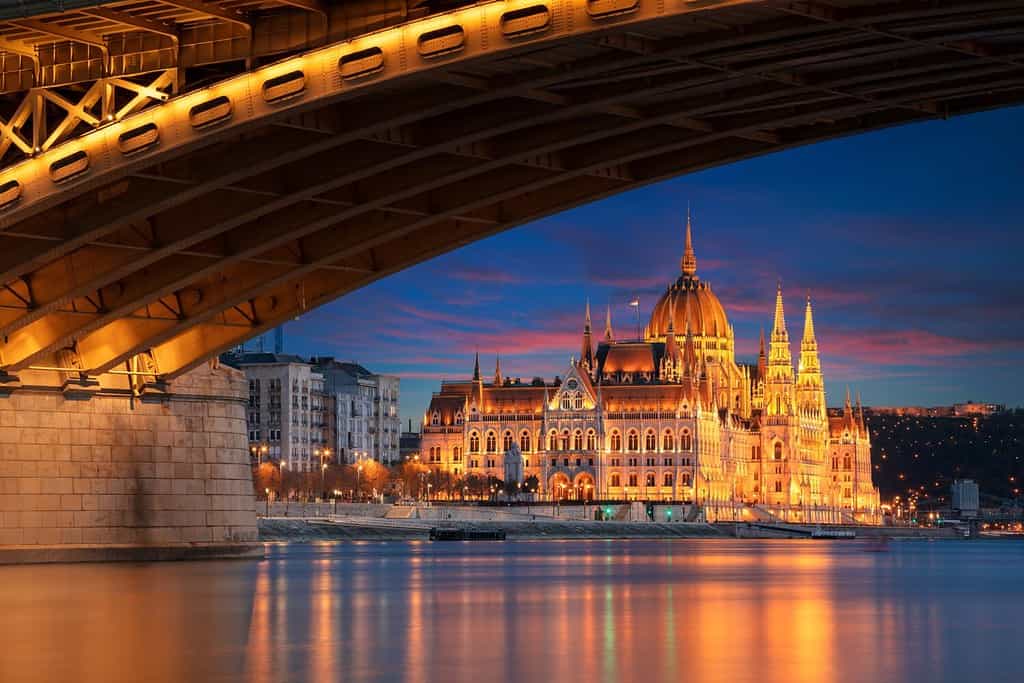
Budapest, Hungary started metro operations in 1896, which makes it the second-oldest metro system in the world.
©Rudy Balasko/Shutterstock.com
Hungary is a landlocked country that borders Austria to the east. Its population is 9.6 million and its capital is Budapest. Hungary is a flat country that is extremely agricultural. One of the most important rivers, the Danube, runs through the country and nine other nations. Hungary is home to mouflon sheep, deer, and wild boars.
Hungary has been controlled by outside powers throughout history. It was part of the Austro-Hungarian Empire until 1918. It was a Soviet-controlled country for most of the 20th century until it claimed its independence in 1990. Today, Hungary is a democracy, though it has been subject to various human rights violations, especially directed at the LGBTQ population and Romani people.
Italy

The Colosseum in Rome, Italy, was able to fit from 50,000 to 80,000 people.
©prochasson frederic/Shutterstock.com
Located to the south of Austria, Italy has a population of 58.8 million. The country is in the shape of a boot and the Mediterranean Sea surrounds the country. The Alps are in the north of Italy and the south is more plain and has a mostly dry climate.
Italy is a fairly young nation, as before that it was compromised by various city-states. In 1922, a fascist dictatorship headed by Benito Mussolini rose to power, which lasted until the end of World War II. Today, Italy is a republic and an economic powerhouse in Europe.
Liechtenstein
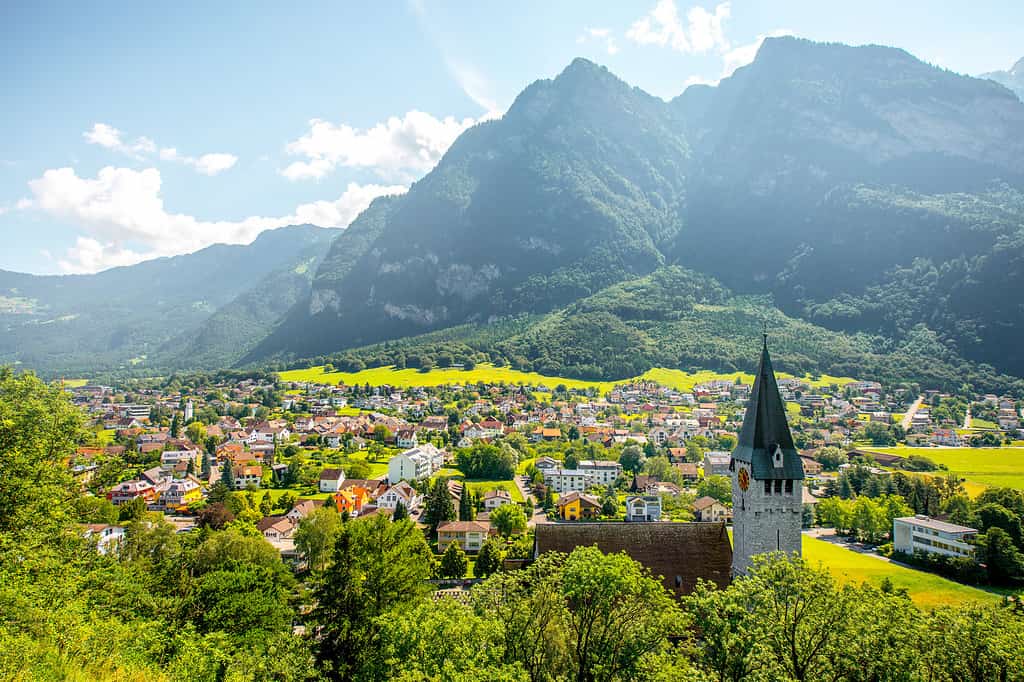
Liechtenstein is the sixth smallest nation in the world.
©RossHelen/iStock via Getty Images
The country of Liechtenstein is a tiny landlocked country that borders Austria to the west. Its population is about 38,000 and its capital is Vaduz. The Rhine River passes by its western border with Switzerland and the country is quite mountainous because of the Eastern Alps. Liechtenstein has a continental climate with cold, snowy winters and cool summers.
Liechtenstein formed part of the Holy Roman Empire for about a hundred years before becoming part of the German Confederation. In 1866, however, it gained its independence. Liechtenstein is a principality but it is still part of the European Economic Area and Schengen Area.
Slovakia
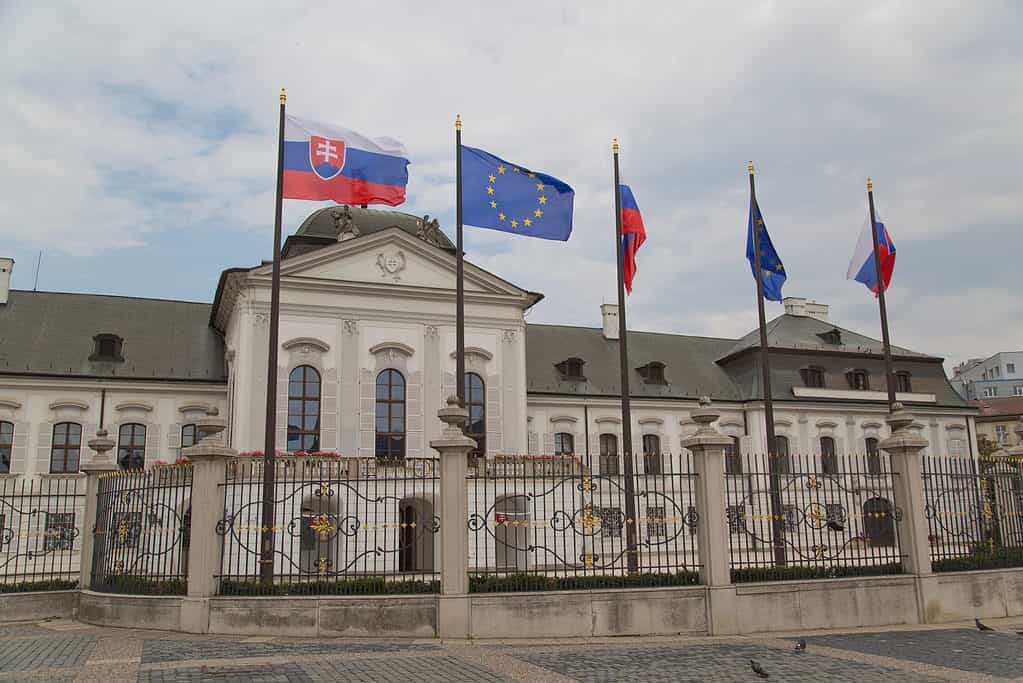
Bratislava, Slovakia is the only city in the world that borders two nations: Austria and Hungary.
©Kutikan/Shutterstock.com
Slovakia borders Austria to the east and has a population of 5.4 million. The country is mountainous in the north and more flat in the southern regions. The wildlife in Slovakia is diverse and is home to the Tatra chamois.
When Austria-Hungary was dissolved, Slovakia became an independent country under the name of Czechoslovakia. That soon ended when Hitler annexed the country. After World War II, the Soviet Union established a puppet Communist state. In 1989, Czechoslovakia revolted and called for independence from the Soviet Union. In 1993, Czechoslovakia was split in two forming two democracies: the Czech Republic and Slovakia. Today, Slovakia is a democracy with an up-and-coming economy.
Slovenia
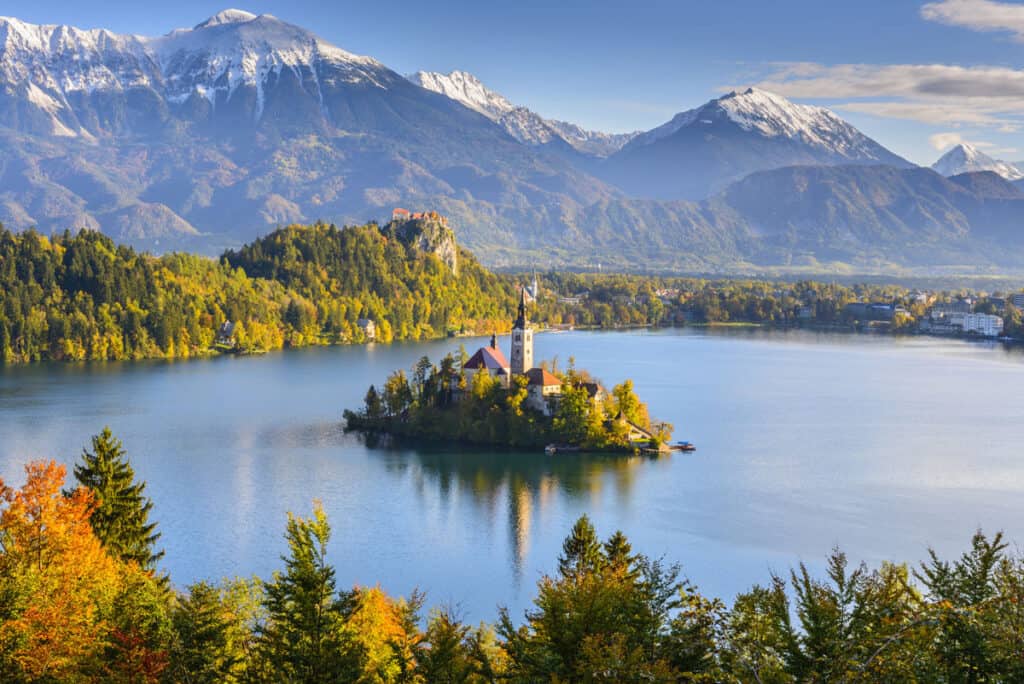
There are over 50 dialects spoken in Slovenia.
©iStock.com/AlbertoLoyo
Slovenia is located south of Austria and part of the country borders the Adriatic Sea. Geographically, Slovenia is mountainous in the north, with plains in the central part of the country, and a coastal area by the Adriatic Sea.
For most of the 20th century, Slovenia was part of Yugoslavia. Slovenia claimed independence and broke away from Yugoslavia in 1991. Since then, it has enjoyed a stable democracy and a flourishing economy.
Switzerland
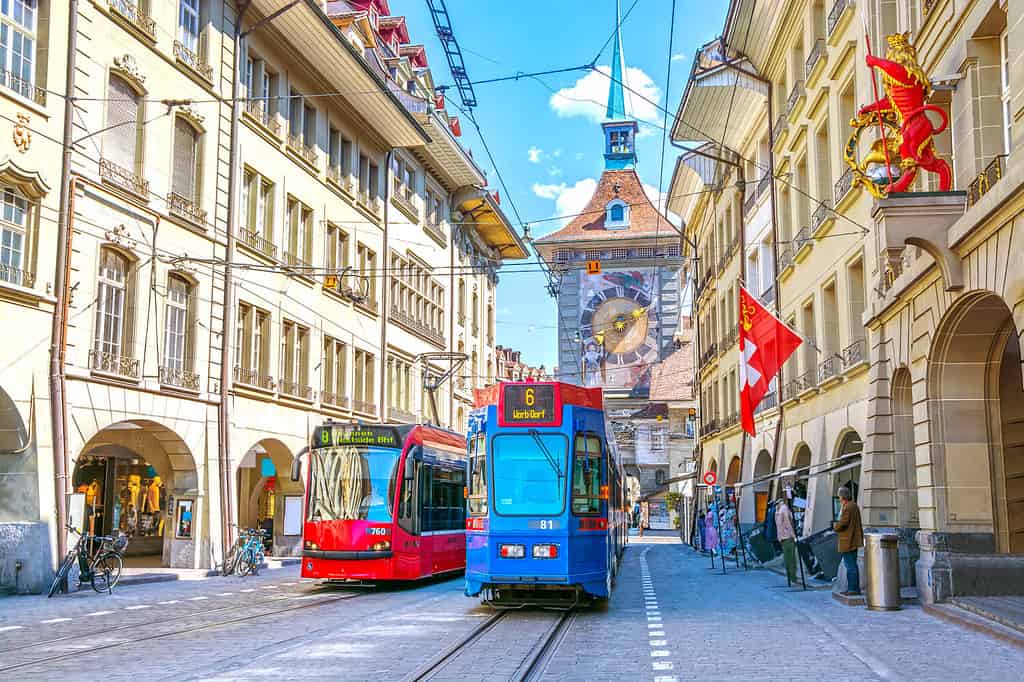
Switzerland uses the Swiss franc.
©Marina Datsenko/Shutterstock.com
With a population of 8.7 million, Switzerland is a landlocked country that borders Austria to the west. It is a mountainous country that has a temperate climate. The animals that live in the mountains include the ibex, mountain goats, and others.
In 1815, Switzerland became an independent country. Historically, Switzerland has been a neutral nation. It is considered to be one of the wealthiest nations in the world.
Austria Facts
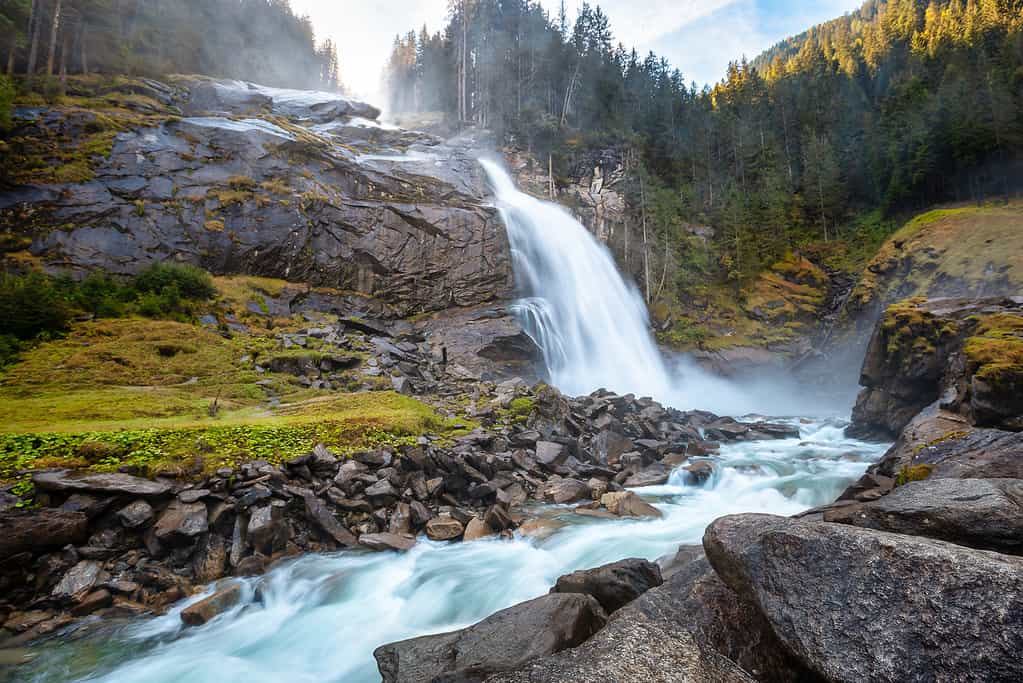
The Krimml Waterfalls in Austria are the largest in Europe.
©rpeters86/iStock via Getty Images
- Capital: Vienna
- Population: 9 million
- Currency: Euro
- Official Language: German
- Official Regional Languages: Hungarian, Slovene, Croatian
- President: Alexander Van der Bellen
- Chancellor: Karl Nehammer
Conclusion
The countries that border Austria include the Czech Republic, Germany, Hungary, Italy, Liechtenstein, Slovakia, Slovenia, and Switzerland. Austria has been at the center of many conflicts and wars in Europe and because of that, Austria is now a democracy that ensures it is neutral in many decisions facing the continent and worldwide.
Economically, Austria is a top-performing country that has a high GDP. Because of the Schengen Area, there are also no border checks between all countries that border Austria. The country is seen as a politically stable democracy in Europe and throughout the world.
Summary of the 8 Countries That Border Austria
| Country | Location | |
|---|---|---|
| 1. | Czech Republic | Borders Austria to the northeast |
| 2. | Germany | Borders Austria to the northwest |
| 3. | Hungary | Borders Austria to the east |
| 4. | Italy | Borders Austria to the south |
| 5. | Liechtenstein | Borders Austria to the west |
| 6. | Slovakia | Borders Austria to the east |
| 7. | Slovenia | Borders Austria to the south |
| 8. | Switzerland | Borders Austria to the west |
Thank you for reading! Have some feedback for us? Contact the AZ Animals editorial team.

